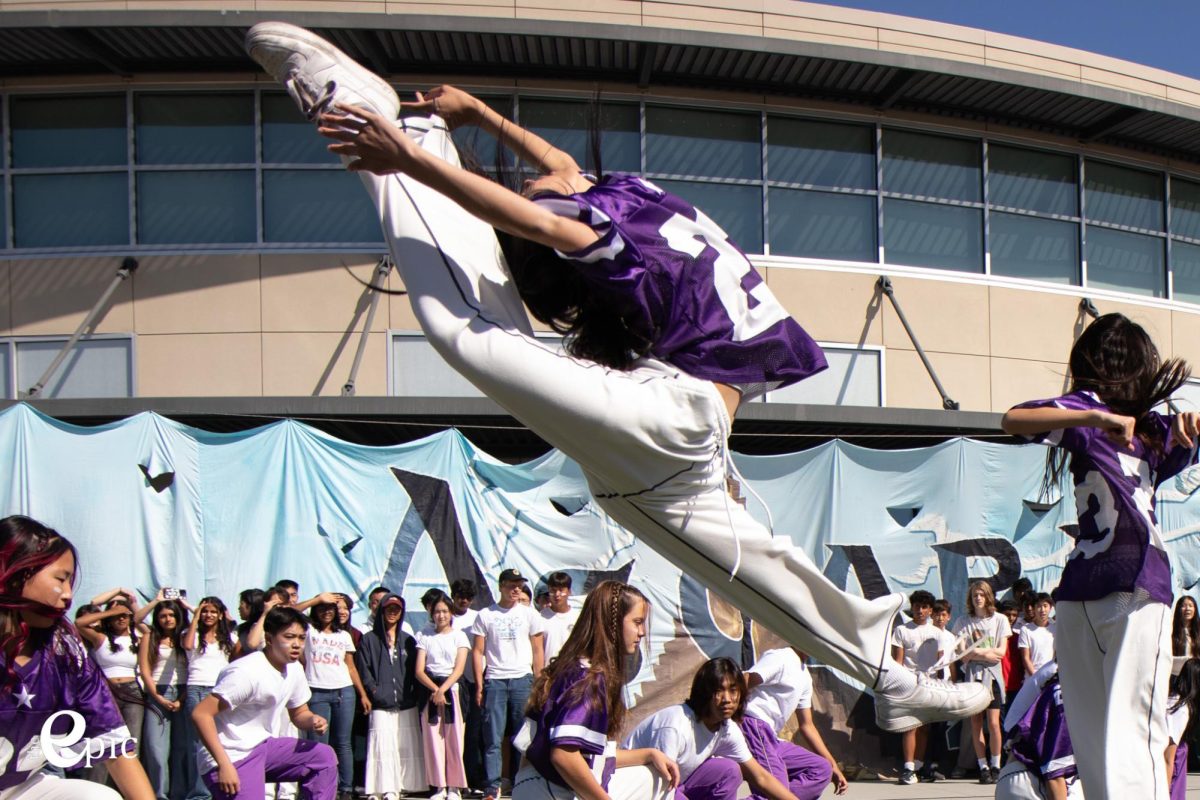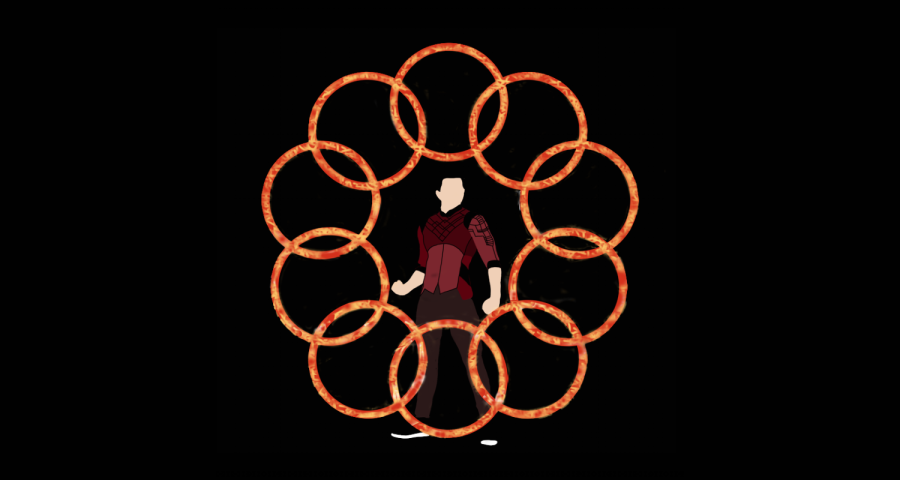“Shang-Chi” punches its way into cinematic history
Graphic illustration by Emma Constable
Marvel’s “Shang-Chi” follows the tale of martial-arts master Shang-Chi and is a thrilling journey of action and graphics.
October 6, 2021
With thrilling graphics and an action-packed plot, Marvel’s latest superhero installment, “Shang-Chi and the Legend of the Ten Rings,” breaks crucial barriers in representation for people of color in Hollywood and is overall a captivating watch that satisfies the viewers.
The film stars Canadian actor Simu Liu as Shang-Chi, a martial arts master who confronts his foggy past as he discovers and interacts with his father’s mysterious Ten Rings organization. With twists and some purposeful omission of character backstories, the tale keeps the audience enticed as Chi explores his identity. Chi must manage the turmoil of protecting his mother’s village while facing his father’s misguided attempt to save her.
A mixture of guilt, tangled betrayals and the undying strength of love builds toward engrossing climaxes, where intricate fight scenes bring a surge of energy that is impossible to turn away from. As Chi and his father reckon with their past choices, the audience rides the exhilarating wave of complex emotions. The journey is also interspersed with comedic elements, such as Chi’s unique contrast between superhero prowess and his job as a valet driver, which keep the plot lighthearted and entertaining.
Aside from the captivating storyline, the film’s biggest highlight by far is its stunning computer-generated graphics. From a luminescent water droplet forest to a land of mythical creatures, dream-like realms are rendered in wondrous detail and envelop the viewer scene after scene, adding to the movie’s flair. Exquisitely crafted creatures like nine-tailed foxes, shimmering dragons and mucoid demons instigate both fear and awe in the audience. The animation of their movement and the careful attention to lighting further enhance a sense of reality that keeps the viewer entranced.
But as epic as the story and imagery may be, they are confined to a stereotypical superhero arc: The generic sequence of discovering an impending problem and training to face it renders the movie extremely predictable. Once past the midpoint, events lose their surprise appeal and can easily be anticipated by the viewer. The ending is poorly fleshed out and entirely preventable, but in the effort to drive the rigid hero storyline, characters overlook blatantly obvious solutions.
Several characters are also rushed to become heroes, unrealistically mastering a multitude of skills in a short time while other characters remain undeveloped throughout. At times, the imposition of a classic savior narrative is reduced into corny dialogue, which detracts from the emotional appeal that many important scenes warrant. Although riveting, the conclusion is a mix of fantastical elements that are almost too good to be true.
Already, the film has been making waves. Released on Sept. 3, it broke the box office record for a Labor Day Weekend opening and became the second largest pandemic opening. More importantly, it takes a crucial step toward Asian representation in Hollywood. It boasts a 98% Asian cast and is the first Marvel film headed by an Asian director, bringing recognition to the talent present across often overlooked racial groups.
It is also the first Marvel film to feature an Asian lead. With almost half of the dialogue being spoken in Mandarin, it is a genuine and heartwarming attempt to honor a culture on a level beyond stereotypes. This is a glaring contrast to the original 1970s comics series from which the film originates, which catered to white audiences with stereotypical depictions of Asians as either power-hungry mystics or kung-fu masters. For many Asian-American viewers, the watch will be particularly enjoyable with the small cultural details it incorporates, such as traditional phrases and costumes.
On a separate front, the film also breaks barriers with a lack of female romantic interests. While most hero-esque films cast a female role who is chased and wooed by the male protagonist, “Shang-Chi” instead features a friendship in which both male and females contribute equally to the end goal. A myriad of female characters, the most prominent of which include Awkwafina’s Katy and Meng’er Zhang’s Xu Xialing, are dynamic and stand strong without male companionship. The lack of sexualization in costumes often symptomatic of superhero movies is yet another empowering change.
Overall, “Shang-Chi” is an enthralling experience that transports viewers into the depths of action and imagination despite some flaws in the plot. In an industry riddled with discrimination and sexism, the film’s release and success is a bellwether signaling change for the better.


































































